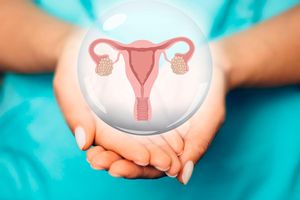Irregular bleeding in women using birth control shot

If the bleeding is heavy, or if you have any other symptoms, or if you are uncomfortable with the bleeding, you can visit a gynaecologist for review.
What you need to know:
- There are medications that may be prescribed to stop the bleeding, to manage any pain, and correct low blood levels.
Doctor, I have been using the three-month family planning injection and bleeding continuously for several weeks. What l can use to stop the bleeding?
Dear reader,
Just like any other medication, using contraceptives has a risk of experiencing negative health effects. When using the three-month family planning injection, many women usually experience abnormal bleeding for several months, up to a year. The bleeding may be heavier, lighter or irregular, and it may be continuous or on and off. After one year, about half of women who continue with the injection may have no periods at all, and the periods resume sometime after stopping the injections.
If the bleeding is heavy, or if you have any other symptoms, or if you are uncomfortable with the bleeding, you can visit a gynaecologist for review. You will be examined to see if there are any other health concerns, and necessary tests will be done based on the findings such as blood level; coagulations tests (to check how well the blood is able to clot); pregnancy test; pelvic scan; tests for any infections, among others. If there are any health problems that are identified, then they will be treated.
There are medications that may be prescribed to stop the bleeding, to manage any pain, and correct low blood levels. You can also opt to wait for the months to be over, then decide whether to continue with the contraceptive or change to another method.
Doc,
Of late, my mother, 75, is experiencing a lot of pain before passing urine. Sometimes no urine comes out. We have visited several hospitals and ultrasounds show nothing is wrong. What is happening?
Dear reader,
It appears your mother may be experiencing urinary retention. With urinary retention, the urinary bladder does not empty completely after passing urine, and the bladder still feels full.
Urine is formed in the kidneys and then it flows down through the ureters to the urinary bladder, where it is stored until you are ready to pass urine. For the urine to get out of the bladder, there are two sets of muscles that it has to pass through. The internal sphincter located at the exit of the bladder is involuntary, which means you do not control it. There is also the external sphincter, which is voluntary. This is the set of muscles that you voluntarily relax when you are in the toilet so that urine can get out of the bladder, through the urethra, and out of the body. With urinary retention, there may be a problem anywhere along this system.
In acute (sudden) urinary retention, there is sudden inability to pass urine, and usually it is accompanied by low abdominal pain due to pressure from the urinary bladder. This is a medical emergency and there is need for urgent intervention.
With chronic or longstanding urinary retention, the retention develops gradually and some people may have no symptoms. For those who have symptoms, this may include feeling the need to pass urine even after passing urine; always feeling the need to pass urine; problems starting to pass urine; passing urine frequently; having a strong urge to pass urine; poor urine stream (slow, uncontrolled or weak); waking up many times at night to pass urine; leaking urine; and lower abdominal or pelvic discomfort.
With urinary retention, there is a risk of recurrent urinary tract infections, build up of urine in the ureters and the kidneys, damage to the walls of the bladder, development of bladder stones, kidney damage, high blood pressure and eventually kidney failure, if untreated.
Urinary retention can happen to anyone, though it is 13 times more common in males than females, and it is also more common in older individuals. It may occur as a result of an obstruction such as due to constipation; a mass/tumour in any of the pelvic organs. The obstruction may be from prolapse of any of the pelvic organs – this happens when weakening of the pelvic muscles leads to one or more of the pelvic organs (rectum/uterus/bladder) “falling” out or lowering and pushing out against the other organs.
Urinary retention may also occur as a result of nerve damage from diabetes, stroke, injury or other neurological conditions. Retention may also occur as a complication following surgery or as a side effect of some medications. Another possible cause of urinary retention is infection and/or inflammation along the urinary system. Inflammation along the urethra can lead to formation of a urethral stricture, which is scarring along the urethra that may narrow or block the passage.
To diagnose urinary retention and identify any underlying cause, your mother needs a comprehensive evaluation that includes a complete medical history, thorough physical examination, and relevant tests. These may include urine analysis; urodynamic testing, post-void residual urine test; cystoscopy; electromyography and scans.
Acute urinary retention is managed by using a catheter to drain the urine quickly. This may lead to faster urine production, but this usually resolves within 24 hours. With chronic urinary retention, catheters may be used for a short while to improve urine drainage. Specific treatments are dependent on the underlying cause such as antibiotics for infection; stopping any medications that may be causing retention; removing any obstructions; dilatation and/or stenting of urethral strictures; support for prolapsed pelvic organs, among others. There are medications to help the sphincters relax and allow urine to pass more easily.
As part of self-management, she can do pelvic floor exercises to help strengthen the pelvic muscles and the urinary sphincters. In addition, she can take fluids in the morning and early afternoon, and have a schedule for using the bathroom, even when she doesn’t feel like going.
Send your questions to healthynation@ke.nationmedia.com

